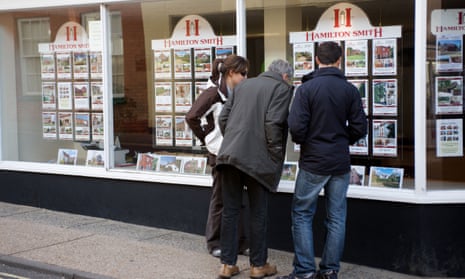House prices in the UK continued their upwards climb in November, reaching double-digit growth again as demand remained strong after the end of the stamp duty holiday and the furlough job support scheme.
The average UK house price rose by 0.9% last month, according to data from the building society Nationwide, after an increase of 0.7% in October, taking the average UK property value to £252,687. Average house prices are 10% higher than a year earlier.
House prices have risen to almost 15% above levels seen in March 2020 when the coronavirus pandemic first struck the UK, Nationwide said.
The continuing rising prices appear to be in part down to a reduction in the supply of houses available to buyers. The October property market was the quietest for almost a decade, according to data from HM Revenue and Customs, as house sales were 28% lower in October than a year earlier after a record surge in activity earlier in 2021.
Recent figures from the Bank of England showed the number of mortgages approved for UK house purchases fell in October to the lowest level in 16 months.
“There have been some signs of cooling in housing market activity in recent months,” said Robert Gardner, Nationwide’s chief economist. He added this was “almost inevitable” after the stamp duty holiday in England and Northern Ireland finished at the end of September, as buyers rushed to bring forward their purchases to take advantage of the tax break, which also made larger homes with bigger gardens more popular.
“Activity has been extremely buoyant in 2021. The number of housing transactions so far this year has already exceeded the number recorded in 2020 with two months still to go and is actually tracking close to the number seen at the same stage in 2007, before the global financial crisis struck,” Gardner said.
However, the outlook remained uncertain, he said. “It is unclear what impact the new Omicron variant will have on the wider economy.”
Gardner added that the increase in the cost of living was having an impact on consumer sentiment, while the housing market might be cooled further by the prospect of a rise in interest rates.
Samuel Tombs, the chief UK economist at Pantheon Macroeconomics, said mortgage rates looked to be rising. Swap rates, which lenders use to price their loans, have increased, and profit margins on home loans were already “very tight by past standards”, he said.
“Admittedly, the link between variations in mortgage rates and changes in house prices isn’t stable.”
Tom Bill, the head of UK residential research at the estate agent Knight Frank, said: “Gravity-defying price growth is the result of low interest rates and tight supply, which are both things we expect to reverse next year, putting downwards pressure on prices. Interest rates may rise more slowly if the new Omicron Covid-19 variant proves to be more serious than the early anecdotal evidence suggests.”
The Omicron variant could also cool the property market, by making some homeowners decide to wait before putting their property up for sale.
“The number of homes for sale coming on to the market is slowing, which is nudging prices steadily upwards,” said Jonathan Hopper, the chief executive of Garrington Property Finders.
“Supply is set to be curtailed even further by the festive season and the new Covid variant, both of which are likely to prompt would-be sellers to hold off on listing their home until the new year. For now, the loss of momentum is gradual, and while we are starting to see some sellers rein in their pricing aspirations, in most areas things are calming down rather than going down.”
